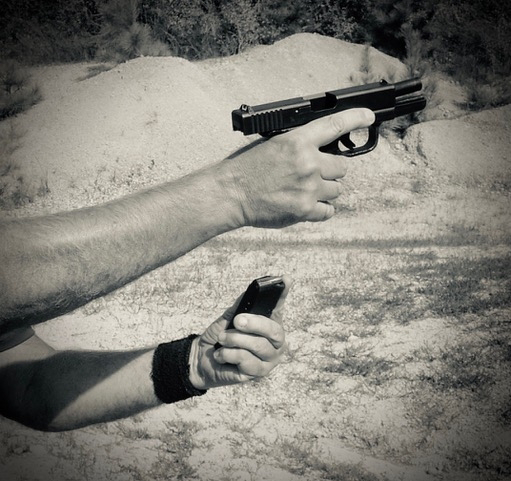 |
Last week’s wire outlined what I practice. Today, it’s “how I practice.” The important thing to keep in mind is the vast difference between training, shootin’ and practice. Training is the introduction of new techniques under the guidance of an instructor/teacher. Shootin’ or plinkin’ is fun, but doesn’t prepare you for defensive applications -- plus, there’s the real possibility of developing unsafe habits. Practice is time to make progress, improving your physical and mental skills.
The speed you practice should be slow. This is a tempo that eliminates, or greatly reduces the chances of making a mistake. Working at a leisurely pace puts good repetitions in the memory bank and creates confidence. Both are critical to your performance under stressful, short time events. The only time I will go full speed – I don’t even like using the word fast - is when lives actually depend on it. This insures my “life and death,” full speed performance will correct, backed up with plenty of proper repetitions. Practicing slowly ensures positive progress.
I do a lot of drills, and a minimal amount of firing. There’s actually more dry practice on the range than live fire. Prior to live fire I practice each drill dry. First drill on my list – you gotta have a list to keep you on track – one lateral step, left or right, while issuing verbal commands and drawing, then engage.
I run through this dry, several times, at slow speed. When I discover there’s a step in a sequence giving me particular problems, I’ll practice that one action until it becomes smooth, then incorporate it back into the full sequence. Once everything feels good it’s time for live fire. I’m not wasting ammo; more learning occurs with dry practice than live fire and at this stage firing an accurate hit should not be the problem.
With the majority of drills I only fire once, concentrating on accuracy, not speed. The first shot is the most important one you’ll ever fire. And if the first hit is accurate, the next shots will follow suit. By shooting precisely as possible during practice I know when my accuracy does degrade – a real event at full speed – I’ll still be getting effective hits.
Improving my accuracy is also why mostly I shoot most from longer distances. The speed of the draw is always the same, regardless of distance. If I can hit well at twenty-five, forty yards it will be no problem making hits at closer, defensive distances.
After completing a drill four or five times I take a break. This allows me to check my “exact” accuracy. I’ve already called my shots, just need to confirm how precise they are. (If you’re having to inspect the target to tell whether you hit it or not it’s time for remedial accuracy drills.). This is also time to hydrate, replenish ammo and review my performance. After another set or two it’s on to the next drill, which will add components, such as single hand work.
Proper repetition – practice - ensures your real-life performance will be acceptable. Remember, you don’t have to be the “best.” You just have to be better than the threat(s). Practice makes you “good enough.” And keep in mind – everyone who puts in some practice can draw and shoot fast enough. Your “speed” comes from making the decision to move, draw, fire and such in a timely fashion. If you wait too long it won’t matter how fast you can draw and fire a shot; you won’t have time. Practice, and there should be lots of it, is the time to get it “right.”
Tiger McKee is director of Shootrite Firearms Academy, which is celebrating its twenty-fifth anniversary. He is the author of The Book of Two Guns, AR-15 Skills and Drills, has a regular column in American Handgunner and makes some cool knives and custom revolvers. Visit Shootrite’s Facebook page for other details.